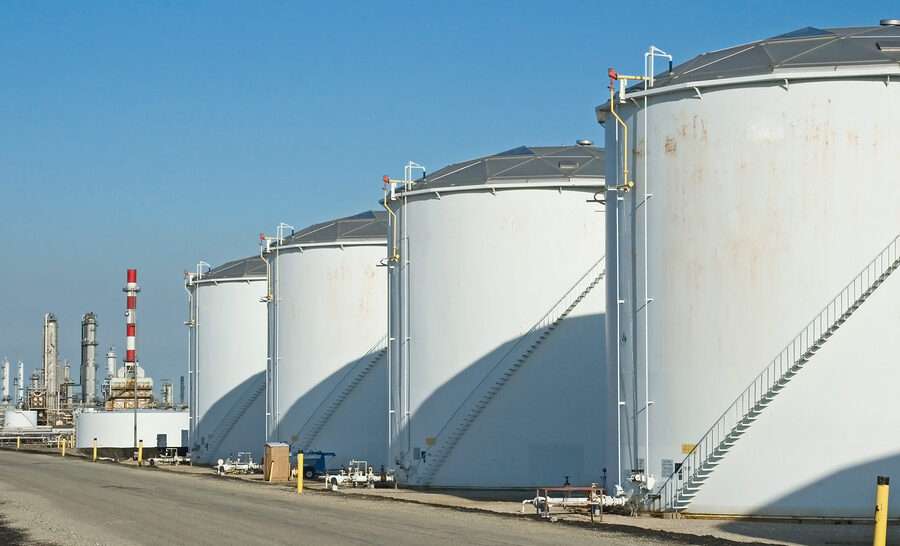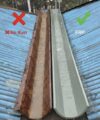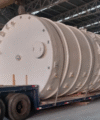
Essential Guide to Installing an FRP Tank: Prevent Problems Before They Start
The demand for FRP tanks—or fiberglass reinforced plastic tanks—continues to rise, and for good reason. In 2024, the global FRP tank market reached $2.49 billion USD, with forecasts pushing it to over $3.13 billion by 2028. This growth reflects the critical role FRP tanks play across industries for their lightweight, corrosion-resistant, and long-lasting performance. But even the most well-engineered FRP tank can fall short if not installed correctly.
At Troy Dualam, we’ve learned that successful FRP tank installation comes down to preparation, precision, and experience. Even small oversights can lead to system failure, costly downtime, or expensive repairs. To help you protect your investment, here’s a guide to the most important things to know when installing your next FRP storage tank.
FRP Tank Installation: Step-by-Step Best Practices
1. Preparation is Everything
The first step in any FRP tank installation is preparing a proper foundation. FRP tanks must sit on a stable, even surface—usually a concrete pad or compacted gravel-sand base.
FRP installation tips:
-
Use compacted fine sand or pea gravel for a smooth support layer.
-
Include a sand-retaining groove to preserve uniformity.
-
Consider a thick rubber mat underneath the FRP tank for added shock absorption.
Skipping this phase can lead to tank instability, cracking, or wear on the tank bottom—compromising the tank’s integrity.
2. Handling FRP Tanks Safely
Though FRP tanks are known for being durable and corrosion-resistant, they are not immune to damage. Careful handling during transport and positioning is essential.
FRP tank handling guidelines:
-
Always lift with appropriate equipment—cranes, hoists, or forklifts.
-
Never roll or drag the tank on the ground.
-
Use soft-soled shoes when working on or near the tank to avoid surface damage.
Mishandling can result in structural abrasions or premature failure.
3. Installation Essentials
Once your FRP tank is in position, focus on stability, alignment, and connection points.
Key FRP installation steps:
-
Secure the FRP tank with properly poured anchor bolts to resist wind and seismic forces.
-
Align all nozzles, drains, and fittings precisely with your system’s infrastructure.
-
Install blind plates as a safeguard against negative pressure during startup.
These steps ensure that your FRP tank system operates safely and efficiently from day one.
4. Post-Installation Inspection
Before commissioning your FRP tank, perform a detailed inspection to verify everything is in place and secure.
Inspection checklist for FRP tanks:
-
Examine the structure for cracks, warping, or signs of stress.
-
Ensure all fittings, valves, and gaskets are tightly sealed.
-
Confirm anchor bolts and supports are locked in and stable.
Skipping this step may lead to operational hiccups or long-term maintenance issues.
Why Trust Troy Dualam for Your FRP Tank Installation?
Every FRP tank installation project comes with its own set of variables—from environmental conditions to tank size and industry-specific standards. That’s why you need a team that understands FRP tanks from the inside out.
At Troy Dualam, we don’t just install FRP tanks—we build lasting, high-performance systems tailored to your facility’s exact requirements. Our years of field experience, paired with advanced fabrication techniques, ensure every FRP storage tank we install delivers optimal performance and longevity.
The Bottom Line
Investing in a new FRP tank isn’t just about buying a piece of equipment—it’s about safeguarding your entire operation. A well-installed FRP tank provides long-term durability, chemical resistance, and peace of mind. Whether you’re upgrading an old unit or building a new system from the ground up, the right FRP tank installation strategy can prevent costly failures later.
Let Troy Dualam be your partner in achieving flawless FRP tank performance. Contact us today to discuss your project needs—we’re ready to deliver the experience, reliability, and expertise you can count on.
[gtranslate]






